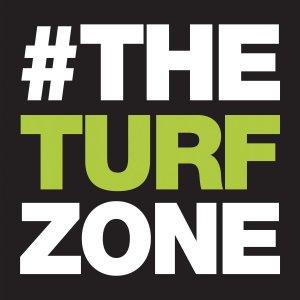The Turf Zone Podcast

Arkansas Turfgrass Association – ResistPOA Series: John Kaminski
Arkansas Turfgrass Association – Julie Holt, Content Director, TheTurfZone.com
TheTurfZone: Welcome to TheTurfZone. This episode continues our series on the USDA-funded ResistPoa Project. In this episode, we’re talking to John Kaminski, Ph.D., Professor at Penn State. Welcome John, thanks for joining me.
John Kaminski: Thanks for having me.
TTZ: So let’s jump right in to the ResistPoa Project. We know that controlling annual bluegrass can be a challenge for turfgrass managers, and this project is combining efforts of many researchers and participants. So for your part of the project, I understand that there are many objectives. Let’s start off with talking about what objectives you are working on specifically.
JK: Well, we’re involved in, I don’t know how many, it’s a lot, but several aspects of the project. We’re the lead on two of them. The two that we’re the lead on are first seedling emergence patterns, so there’s several of us around the country that are basically monitoring seedling emergence throughout the entire year. So we’re trying to be able to model seedling emergence based on temperature, soil moisture throughout the various zones in the United States in hopes that we can time some of our pre-emergence or post-emergence herbicides can be applied at those specific timings.
So that’s one that we’re taking the lead on. The other one that we’re taking the lead on, and I don’t know how I got put on this to be honest with you, but there’s an education component. So there’s an outreach and extension component, which is sharing the information with those in the industry and then there’s an education component that I’m taking the lead on that’s going to be more about teaching future scientists and students, developing and pulling together the materials that can be used in classrooms and those types of things. So those are the two that I’m taking the lead on. I have a graduate student Kaiyuan Tang, who is really kind of spearheading the research end of the project. Also there’s a resistance section where we’re monitoring, collecting samples from across Pennsylvania, at least for us, and different zones in the United States and we are screening them for resistance to various herbicides. Apparently this has been a huge problem in the south and with the southern golf courses and home lawns in those areas. But in the north, we’ve been screening for a year, we slowed down a little because of COVID, we can’t really travel that much, but we haven’t found any resistance so far to the commonly used herbicides up here. So I think that we’re gonna definitely see it be a geographic thing. Herbicides are more of an issue down in the south and diseases and fungicide seem to be a bigger issue for us, so we’ll have to just keep plugging away and see what else we find.
We’re also on a, we’re trying to look for alternative controls for poa, so instead of thinking about the traditional herbicides, we’re looking at some of these non-traditional, or non-chemical controls. Pelargonic acid and some of these other products that would be considered more safe to burn down the poa annua. I don’t know how successful that’s going to be. We put trials out last week and it seemed to burn all the turf, including the desired turf, so I think a lot of it is going to depend on timing and there’s a lot of work to still be done.
TTZ: So you’ve definitely got a full slate with your portions of this project–
JK: We’ve definitely got enough to keep us busy.
TTZ: How does this work with – does this complement some other work you’re doing outside of the project, specifically focused on annual bluegrass?
JK: It does, actually. My lab has been working on poa going back to the late 90s whe...






 Visit Podcast Website
Visit Podcast Website RSS Podcast Feed
RSS Podcast Feed Subscribe
Subscribe
 Add to MyCast
Add to MyCast